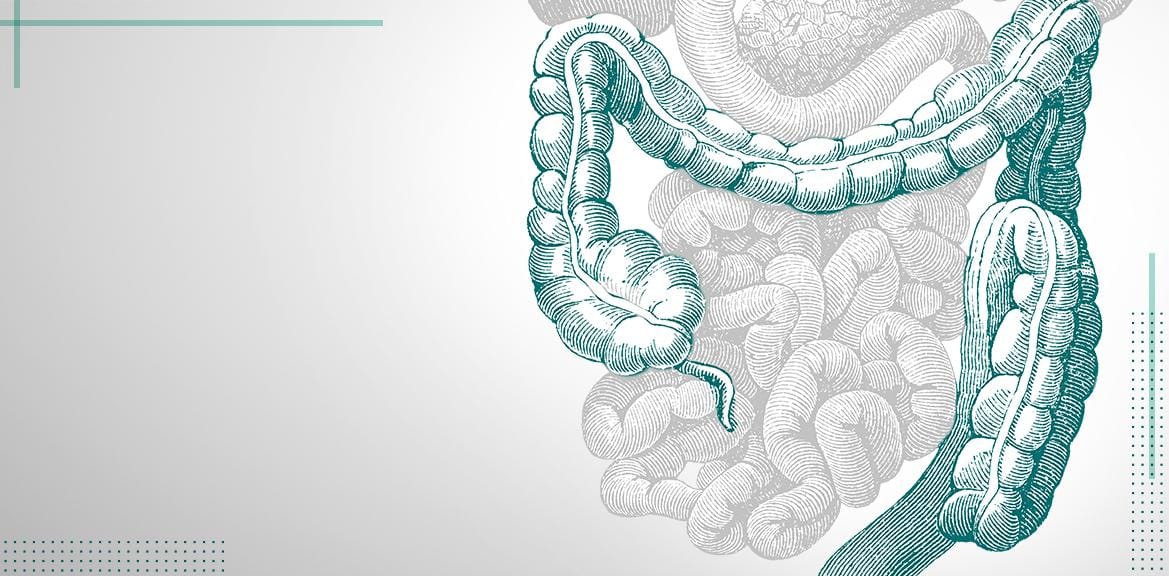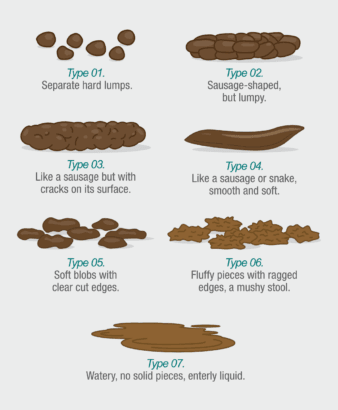
Faecal Occult Blood
Why detect it?
Occult bleeding is the phenomenon whereby blood may leak from any part of the gastrointestinal tract and be excreted with the faeces without changing its colour. Normally, this is an asymptomatic leakage, which can only be detected by means of a stool chemistry test and which is worth investigating as it is potentially linked to various diseases.
Faecal occult blood testing is mainly performed for colorectal cancer screening (advisable from the age of 45/50 years), but is also used for the investigation of other diseases and multiple conditions, including inflammatory bowel disease, duodenal ulcers, oesophageal varices, diverticulitis, haemorrhoids and many others.
Faecal occult blood tests are performed, for preventive purposes, even in the absence of symptoms and outside the screening programme, as it has been observed that colon cancers at an early stage are often asymptomatic1. In fact, according to various epidemiological studies, faecal occult blood screening has led to a reduction in mortality of 33% when the test is performed every year, and 21% when the test is performed every two years(2,3).
What is the FOB test
The Faecal Occult Blood test (FOBt) detects the presence of haemoglobin in the faeces sample, and is a diagnostic indicator of occult bleeding in the lower digestive tract. In fact, haemoglobin from the upper digestive tract is degraded by digestive enzymes and is therefore not detected.
Methods to conduct the test
Tests for the detection of haemoglobin in faeces are based on simple, non-invasive methods.
In the past, the most widespread method used for early screening programmes was the guaiac or gFOBT test, which involved placing the faecal sample on guaiac paper, a reactive paper containing α-guaiaconic acid, and then applying hydrogen peroxide, which gave a blue-coloured reaction product in a few seconds in the presence of blood.
By its nature, this test was only qualitative.
However, the gFOB test was influenced by various factors that could distort its results. Peroxidase activity can be influenced by both food and drugs, for example, foods include red meat, fruits and vegetables high in peroxidase, and drugs include aspirin and vitamin C supplements(4). Thus, patients who underwent the gFOB test applied food and drug restrictions in the days preceding the test in order to avoid false-positive or false-negative results (4).
More recently, immunological or faecal immunochemical tests called FIT (Faecal Immunochemical test) were introduced.
FIT tests detect haemoglobin in faecal samples by specific antigen-antibody reaction for human haemoglobin in the lower digestive tract.
The FIT test is a quantitative test and does not require pharmacological and dietary restrictions for patients. Furthermore, the participation and detection rate of the FIT test is higher than the guaiac test in population screening because it is more accepted by the patient (5).
The clinical performance of FIT tests has been shown to be better than past gFOB tests, with a better sensitivity/specificity ratio and fewer false negative results (6,7,8).
Finally, FIT tests allow a simplified and standardised sampling process thanks to the widespread use of collection and extraction devices dedicated to the haemoglobin marker.
References
- Saito H, et al. A case-control study evaluating occult blood screening for colorectal cancer with hemoccult test and an immunochemical hemagglutination test. Oncol Rep. 2000; 7: 815-819
- Mandel JS, Church TR, Bond JH, Ederer F, Geisser MS, Mongin SJ, Snover DC, Schuman LM. The effect of fecal occult-blood screening on the incidence of colorectal cancer. N Engl J Med 2000;343;1603–7.
- Mandel JS, Bond JH, Church TR, Snover DC, Bradley GM, Schuman LM, Ederer F. Reducing mortality from colorectal cancer by screening for fecal occult blood. N Engl J Med 1993; 328:1365-1371.
- Young GP, St. John JB, Winawer, SJ, Rozen P. Choice of fecal occult blood tests for colorectal cancer screening: recommendations based on performance characteristics in population studies. A WHO and OMED Report. Am J Gastroenterol 2002; 97:2499 –2507
- Rabeneck L, Rumble RB, Thompson F, Mills M, Oleschuk C, Whibley A, Messersmith H, Lewis N. Fecal immunochemical tests compared with guaiac fecal occult blood tests for population-based colorectal cancer screening. Canadian Journal of Gastroenterology and Hepatology, 2012;26(3) 131-147.
- Grobbee EJ, Wisse PHA, Schreuders EH, van Roon A, van Dam L, Zauber AG, Lansdorp-Vogelaar I, Bramer W, Berhane S, Deeks JJ, Steyerberg EW, van Leerdam ME, Spaander MCW, Kuipers EJ. Guaiac-based faecal occult blood tests versus faecal immunochemical tests for colorectal cancer screening in average-risk individuals.
- Cochrane Database of Systematic Reviews 2022, Issue 6. Art. No.: CD009276. DOI: 10.1002/14651858.CD009276.pub2.
Series Editor: Melvin Schapiro, M.D. – Graeme P. Young. Fecal Immunochemical Tests (FIT) vs. Office-Based Guaiac Fecal Occult Blood Test (FOBT). PRACTICAL GASTROENTEROLOGY • JUNE 2004. - Julie A. Chambers*, Alana S. Callander, Rebecca Grangeret and Ronan E. O’Carroll. Attitudes towards the Faecal Occult Blood Test (FOBT) versus the Faecal Immunochemical Test (FIT) for colorectal cancer screening: perceived ease of completion and disgust. BMC Cancer (2016) 16:96 DOI 10.1186/s12885-016-2133-4
FAQ
-
The guaiac or gFOB (Guaiac-based tests)
Principle of the method: It involves depositing the faecal sample on guaiac paper, a reactive paper containing α-guaiaconic acid, to which hydrogen peroxide is subsequently applied, which produces a blue-coloured reaction product in a few seconds in the presence of blood.
By its nature, this test is qualitative only.
Limitations: It is known that peroxidase activity can be influenced by diet and drugs. Interfering foods include red meat, fruits and vegetables high in peroxidase, and among drugs: vitamin C supplements or aspirin-containing medicines. It is therefore necessary to monitor the diet in the days preceding the test to avoid false positives or false negatives.
Test Immunochimico Fecale o FIT (Faecal Immunochemical Tests)
The faecal immunochemical test (FIT) is used to detect haemoglobin in faecal samples.
Principle of the method: The faecal immunochemical test (FIT) consists of an antigen-antibody reaction with specificity for human haemoglobin in the lower digestive tract. When the test result shows a significant level of haemoglobin, it could be a sign of bleeding caused by gastrointestinal diseases.Advantages:
– No pharmacological and dietary restrictions for patients
– High sensitivity and clinical specificity1
– The test is better tolerated by the patient than the gFOB method2FOB-Test TURBO (Ref. 9297) from Eurospital is a FIT test.
Citazioni
1. Mousavinezhad M et al. The effectiveness of FOBT vs. FIT: A meta-analysis on colorectal cancer screening test. Med J Islam Repub Iran 2016 (9 May). Vol. 30:366.
2. Chambers et al. Attitudes towards the Faecal Occult Blood Test (FOBT) versus the Faecal Immunochemical Test (FIT) for colorectal cancer screening: perceived ease of completion and disgust. BMC Cancer (2016) 16:96. DOI 10.1186/s12885-016-2133-4 -
The stool sample is processed using the ready-to-use IVD medical device EasyCal Turbo Universal (Ref. 9502), specifically designed for the extraction of fecal markers: pancreatic elastase, calprotectin, and hemoglobin.
-
Faecal samples can be collected at the patient’s home using the ready-to-use EasyCal IVD medical device containing the extraction buffer for human haemoglobin.
-
Eurospital’s FOB-Test Turbo (Ref. 9297) is a FIT test that does not require pharmacological and dietary restrictions for patients, as it is not influenced by them.
-
Yes, stool samples of various consistencies can be analyzed. To help classify the stool sample correctly, it is recommended to refer to the “Bristol Stool Scale.”

For self-collection (based on the Bristol Stool Scale), only stool samples categorized as types 2 through 6 should be used. We recommend avoiding self-collection for samples classified as type 1 (very hard) or type 7 (very liquid) on the Bristol Stool Scale.
For professional use, you can collect 24 µl of liquid stool with a laboratory pipette and then proceed with extraction using EasyCal.
-
The EasyCal ready-to-use IVD medical device allows for simple, fast and standardised sampling, thanks to the presence of the grooves (3 or 7 depending on the test technology to be performed) on the sampling rod in combination with the filter, which allow the collection of an always fixed amount of sample.
-
Once haemoglobin has been extracted with the EasyCal device, the extracted sample must be processed within 14 days, after storage at a refrigerated temperature of 2-8°C.
-
The absence of a standard reference range for various analytical methods, especially when they are based on different technologies is a well-known situation, which leads to variability in the results of different tests.
In order to equate the measurements taken, it is necessary to convert the results obtained into a universal unit of measurement, i.e. μg of haemoglobin (Hb) per g of faecal sample; the GISCoR guidelines suggest applying the following formula:

-
1. Mousavinezhad M et al. The effectiveness of FOBT vs. FIT: A meta-analysis on colorectal cancer screening test. Med J Islam Repub Iran 2016 (9 May). Vol. 30:366.
2. Chambers et al. Attitudes towards the Faecal Occult Blood Test (FOBT) versus the Faecal Immunochemical Test (FIT) for colorectal cancer screening: perceived ease of completion and disgust. BMC Cancer (2016) 16:96. DOI 10.1186/s12885-016-2133-4

